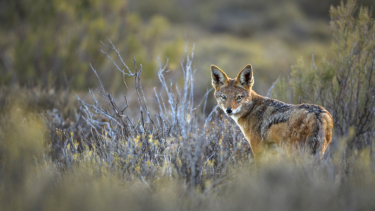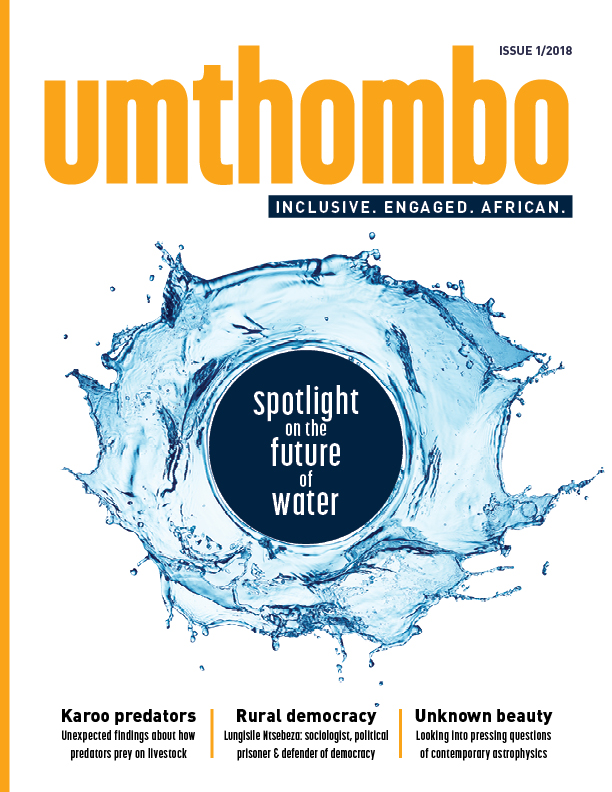The unexpected appetites of predators in the Karoo

Sponsored by

Sponsored by

An extensive study on the eating habits of predators on farms and a nature reserve in the Karoo Desert of South Africa has yielded some surprising findings: few of the predators in the reserve – leopards, jackal and caracal – prey on livestock on neighbouring farmland. This contrasts with the widespread perception by farmers that protected areas are ‘predator nests’ that present a constant threat to livestock. The findings – from the University of Cape Town – lay a useful base for an attempt to understand and resolve the ongoing conflict between farmers and predators in South Africa.

Research from the University of Cape Town looked at the eating habits of predators – jackals (pictured), caracals and leopards – on farmland and a nature reserve.
The first time that French researcher Marine Drouilly laid eyes on a caracal it was lying lifeless on the lawn in front of a farm house in the Northern Cape. Alongside it were a number of black-backed jackals – all with gunshot wounds.
When she approached the farmer about the macabre sight, he told her about the perpetual conflict between carnivores – particularly jackals and caracals – and the region’s sheep farmers.
“It was clear that he regretted killing those animals, but he said it was either that or his livelihood,” she explains.
This conversation left Drouilly feeling conflicted.
In trying to learn more about the wildlife conflict that affects most of the farmers in South Africa, she was surprised to find that there was a lack of consensus by government, nongovernmental organisations (NGOs) and researchers on both the drivers of conflict and potential solutions.
When she had an opportunity to register for a PhD at the University of Cape Town (UCT) in 2013 – under the main supervision of Professor Justin O’Riain, director of the UCT Institute for Communities and Wildlife in Africa – she knew that this complex conflict between farmers and small predators was the topic she would tackle.
Scat and traps
To understand how the presence of livestock influences predators, Drouilly split her research between two contrasting areas: small-livestock farmland in the Central Karoo (dominated by domestic sheep) and a nature reserve in the Western Cape.
To understand predator diet, Drouilly set out to compare the scat (droppings) of jackals, caracals and leopards found in these two landscapes. She also set up an extensive network of camera traps to find out what medium- to large-sized mammals are available as prey to predators in the two areas.
“I walked thousands of kilometres and conducted what at the time was the largest camera trap survey in the history of the Karoo,” explains Drouilly.
Throughout this period, Drouilly lived mostly with farmers and immersed herself in their daily lives.
Predators’ preference for wild prey

In contrast to farmers’ beliefs, jackals, caracals and leopards in the protected area rarely consumed livestock, despite frequently moving out onto farmlands. Drouilly found no remains of domestic sheep in any of the scat in the reserve. “This is positive news that might help the relationships between farmers and reserve managers in the future,” says Drouilly.
It turned out that farmers were right to be concerned about jackals on farmland, which consumed more sheep than predicted by their availability in the landscape.
Caracals by contrast did not prefer livestock to similarly sized wild prey. Thus, while lambs and sheep made up the biggest component of their diet on farmland, the caracals showed a preference for rock hyrax and small antelope. The results suggest that maintaining healthy rock hyrax populations may reduce livestock losses to caracal predation.
No leopards were detected on farmland – as was expected – and those living in the protected area showed a preference for bushpigs and mountain-dwelling antelopes with no appetite for livestock.
What can be done?
Drouilly’s study has shed light on the ongoing conflict between farmers and predators in the Karoo, yet she believes that a lot more can be done by academics, government, NGOs – and everyone who consumes meat.
Several factors, argues Drouilly, could help to alleviate the situation. There needs to be more funding for applied research on how to improve farmers’ livelihoods without adversely affecting the welfare and health of wildlife. There is a lack of appropriately scaled research on the long-term costs and benefits of both lethal and non-lethal management approaches with the result that many bad practices are retained and good alternatives overlooked.&
NGOs and the government need to step in and help farmers to improve their management of predators and livestock, as farmers simply cannot bear the full cost of predation alone. NGOs could also help fund non-lethal tools for farmers; some are doing it already by placing guard dogs on farms, for example.
Finally, if people want to keep eating meat raised with free-ranging predators, they will have to help find or fund solutions, Drouilly argues.
“At the moment,” she says, “I have the feeling that we are only beginning to recognise the extent of the problem.”
Story: Nadia Krige. Photos: Lenses for Conservation | Houdin & Palanque
 |
This story was published in the first issue of Umthombo, a magazine featuring research stories from across the University of Cape Town. Umthombo is the isiXhosa word for a natural spring of water or fountain. The most notable features of a fountain are its natural occurrence and limitlessness. Umthombo as a name positions the University of Cape Town, and this publication in particular, as a non-depletable well of knowledge. Read the complete issue of Umthombo online. |